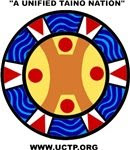 |
Members of the Kasibahagua Taíno Cultural Society shared a contemporary areito
at the 2019 Bear Mountain Pow Wow in New York.
|
Sources
Maestri, N. Areitos: Ancient Caribbean Taíno Dancing and Singing Ceremonies, ThoughtCo., https://www.thoughtco.com/areitos-ceremony-169589
Atkinson L-G. 2006. The Earliest Inhabitants: The Dynamics of the Jamaican Taino. Kingston, Jamaica: University of West Indies Press.
León T. 2016. Polyrhythmia in the Music of Cuba. Polyrhythmia in the Music of Cuba. Diagonal: An Ibero-American Music Review 1(2).
Saunders NJ. 2005. The Peoples of the Caribbean. An Encyclopedia of Archaeology and Traditional Culture. Santa Barbara, California: ABC-CLIO. Scolieri PA. 2013. On the Areito: Discovering Dance in the New World. Dancing the New World: Aztecs, Spaniards, and the Choreography of Conquest. University of Texas Press: Austin. p 24-43.
Simmons ML. 1960. Pre-Conquest Narrative Songs in Spanish America. The Journal of American Folklore 73(288):103-111.
Thompson D. 1983. Music Research in Puerto Rico. College Music Symposium 23(1):81-96.
Thompson D. 1993. The "Cronistas de Indias" Revisited: Historical Reports, Archeological Evidence, and Literary and Artistic Traces of Indigenous Music and Dance in the Greater Antilles at the Time of the "Conquista". Latin American Music Review / Revista de Música Latinoamericana 14(2):181-201.
Wilson SC. 2007. The Archaeology of the Caribbean. New York: Cambridge University Press.






No comments:
Post a Comment